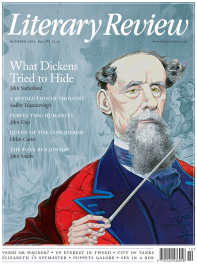Emma Hogan
All That Jazz
Half Blood Blues
By Esi Edugyan
Serpent’s Tail 256pp £10.99
Esi Edugyan’s Man Booker Prize-shortlisted Half Blood Blues could have been so good. Set between Paris and Berlin in 1939 and Berlin and Poland in 1992, it charts the fates of a group of American and German jazz musicians in the shadow of the war. That context alone should lend it a certain solemnity, or weightiness.
Edugyan writes in tightly controlled phrases, the similes she puts in the mouth of her narrator, Sid, the bassist of the group, covering pages: ‘his skin glistened like pure oil’; ‘He got creases like knife wounds in his face’; and ‘looking worn as a used mattress’. Sid’s voice is the strongest aspect of Edugyan’s novel, and she comes near to capturing a whole world through it. It is a world composed of ‘dames swaying their hips in shimmering dresses … chaps drinking gutbucket hooch’. The sound of ‘gorgeous speakeasy slang’ is heard within these lost worlds.
But Edugyan has taken a risk in writing about a war so well documented and so horrific, and her style soon begins to wear thin. Sid often seems to speak in a clichéd tone: ‘We was a kind of family’; ‘hope eats you like a cancer, I guess’; ‘I guess mercy is a muscle like any other’; and love is described as ‘sweet like lemons in a wound’. Constructing a song out of metaphorical language might work, but in a book it can only go so far, and it means the moments when these descriptions should stand out – such as ‘Anxiety hung over the streets like clothes on a line’ – become lost in the general mire. As Edugyan is overly reliant on this narrative trick, her book contains a lot of filler. Chapters spent hiding in a jazz club in Berlin add nothing to the narrative and could have been cut. The cameo appearance of Louis Armstrong (whose voice sounded like ‘gravel crunching under tyres’) contributes little to her story, which revolves around Sid’s betrayal of his friend and fellow band-mate Hieronymus Falk, who was arrested by the Nazis in Paris and is presumed dead.
This betrayal is played out in the shift between 1939 and 1992, and Edugyan skilfully withholds the complete story of Sid’s treachery until the final few pages. But even this revelation turns out slightly muted and seems uncharacteristic. Too cautious to make Sid unlikeable, Edugyan counters him with the character of Chip, the unreliable drummer of the band, who is the only one to have gone on to be a successful jazz musician. With his sharp suits and propensity for lying, he makes an easy fall guy to Sid’s mistakes and provides someone for Sid to call an ‘old son of a bitch’ throughout the book. And yet even he seems slightly unreal. Edugyan obviously researched this period before writing her novel – there is a list of further references in the back of the book – but neither her research nor her occasional ear for a narrative voice prevents Half Blood Blues from disappointing.

Sign Up to our newsletter
Receive free articles, highlights from the archive, news, details of prizes, and much more.@Lit_Review
Follow Literary Review on Twitter
Twitter Feed
It wasn’t until 1825 that Pepys’s diary became available for the first time. How it was eventually decrypted and published is a story of subterfuge and duplicity.
Kate Loveman tells the tale.
Kate Loveman - Publishing Pepys
Kate Loveman: Publishing Pepys
literaryreview.co.uk
Arthur Christopher Benson was a pillar of the Edwardian establishment. He was supremely well connected. As his newly published diaries reveal, he was also riotously indiscreet.
Piers Brendon compares Benson’s journals to others from the 20th century.
Piers Brendon - Land of Dopes & Tories
Piers Brendon: Land of Dopes & Tories - The Benson Diaries: Selections from the Diary of Arthur Christopher Benson by Eamon Duffy & Ronald Hyam (edd)
literaryreview.co.uk
Of the siblings Gwen and Augustus John, it is Augustus who has commanded most attention from collectors and connoisseurs.
Was he really the finer artist, asks Tanya Harrod, or is it time Gwen emerged from her brother’s shadow?
Tanya Harrod - Cut from the Same Canvas
Tanya Harrod: Cut from the Same Canvas - Artists, Siblings, Visionaries: The Lives and Loves of Gwen and Augustus John by Judith Mackrell
literaryreview.co.uk